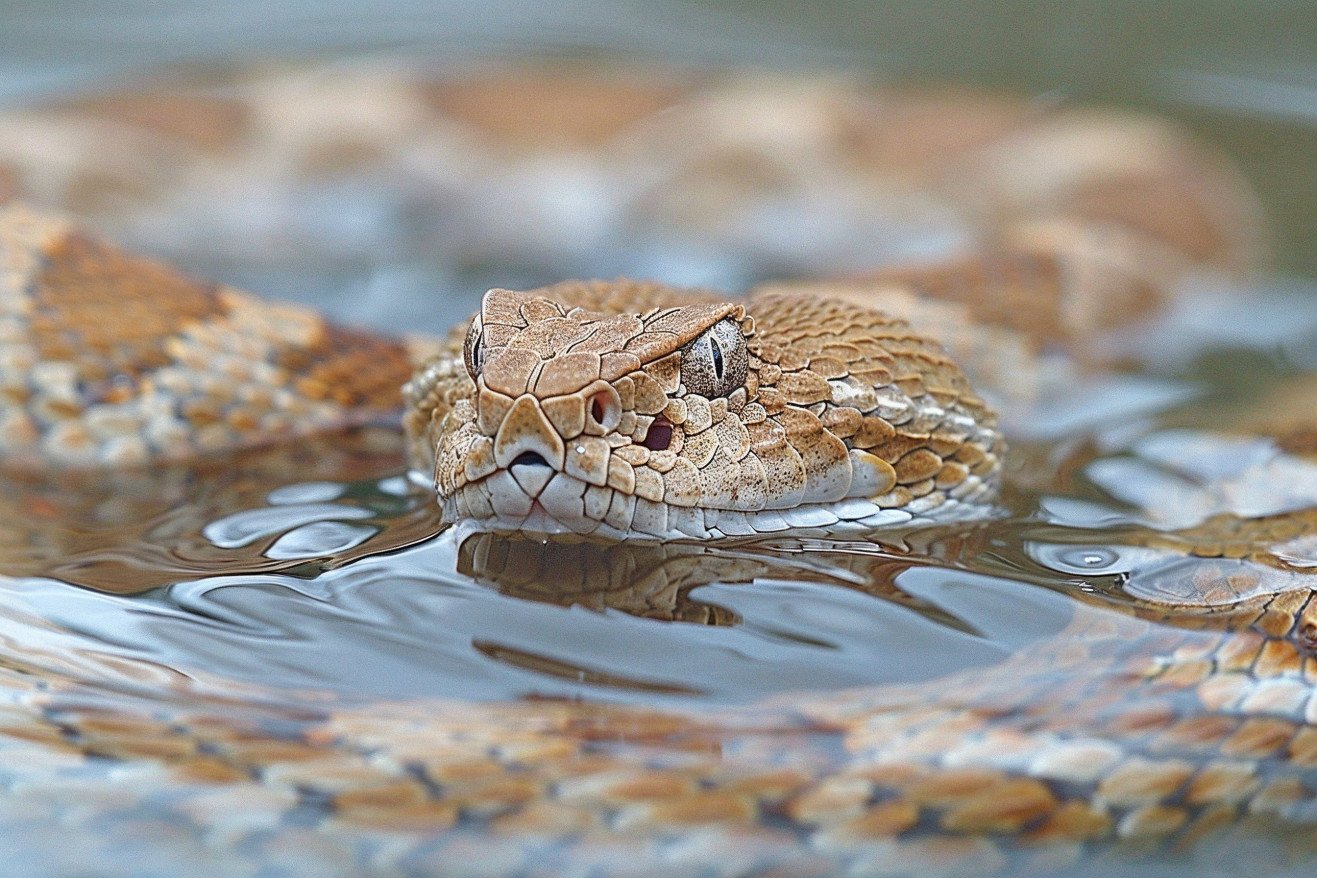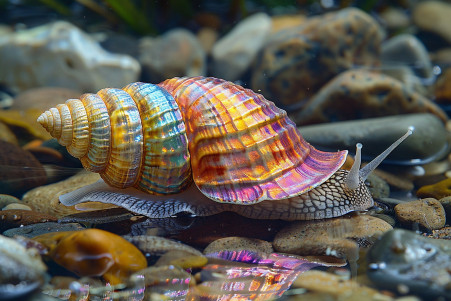Do Snakes Swim? The Science of Their Aquatic Skills
10 April 2024 • Updated 9 April 2024

Whether they're in the backyard pond or the open ocean, snakes have evolved a number of ways to move through aquatic environments using different swimming styles. And yes, snakes can swim—and they do it very well, even though they don't have the typical appendages like fins or flippers. Many species use lateral undulation to power themselves through the water, moving their bodies in a wave-like motion to generate forward momentum. Some snakes, especially those that are semi-aquatic, can also stay underwater for long periods of time.
Despite these impressive skills, much of what we know about snake swimming is still surrounded by myth and misunderstanding. This article will take a deep dive into the scientific literature to explore the aquatic behaviors and physiological adaptations that have allowed snakes to become successful swimmers in both marine and freshwater environments around the world. Drawing on research from the biological, ecological, and evolutionary sciences, we will learn about the ways snakes move through the water and how different snake families have evolved similar and different swimming styles.
Can snakes swim?
Undulating Propulsion: The Serpentine Swim
Snakes swim by generating propulsive force through lateral undulation - the same serpentine movement they use on land. As a snake's muscular body undulates from side to side, it creates alternating crests and troughs that push against the water, generating thrust to propel the snake forward. According to research from Pets on Mom.com, this swimming motion is consistent across most snake species, regardless of their aquatic adaptations.
A key characteristic of this undulatory swimming is that the wavelength of the body wave increases progressively from the snake's head to its tail. Studies on garter snakes and other species have provided quantitative evidence for this non-constant wavelength pattern. The frequency of the undulations, however, remains relatively constant along the body.
Interestingly, a snake's swimming speed correlates strongly with the frequency of these body undulations. Research published in the Journal of Experimental Biology found that faster swimmers like the yellow-bellied sea snake exhibit higher undulation frequencies compared to slower species like water snakes. This suggests that increasing the wave frequency, rather than the wavelength, is the primary mechanism for boosting swimming speed.
While the fundamental undulatory motion is common across snake species, there are notable variations in the specifics of the kinematics and the resulting propulsive efficiency. Morphological adaptations like body shape, tail structure, and buoyancy control mechanisms can significantly influence how different snakes generate and transfer swimming thrust. As we explore further, these variations highlight the incredible diversity of aquatic specializations within the serpentine world.
Aquatic Adaptations: Specialized Features for Swimming
In order to make a living in the ocean, sea snakes have evolved a number of anatomical and physiological adaptations. As outlined in the Wikipedia article on sea snakes, these fully aquatic species have paddle-like tails and laterally compressed bodies that make them look like eels and help them swim more effectively. They have also reduced the size of their ventral scales, which makes them almost immobile on land but much more mobile in the water.
In addition to these adaptations, sea snakes have a number of other specialized features that help them succeed in their aquatic environment. The Natural History Museum explains that sea snakes have sensory organs on their scales that help them detect water-borne vibrations and visual pigments in their retinas that are adapted for underwater vision. These adaptations help them find and move around their underwater homes.
The same source explains that sea snakes can dive to depths of more than 200 meters, in part because they can hold their breath for long periods of time. This is made possible by a network of veins on their head and snout that allow them to absorb oxygen through their skin while they're submerged. They also have specialized glands that help them excrete salt, which helps them deal with the problems of osmoregulation in the ocean.
Water Snakes and Sea Snakes
Many snake species, including the cottonmouth (or water moccasin) and a number of water snakes, are semi-aquatic and live near freshwater bodies like ponds, rivers, and swamps. According to Tara Wildlife, these snakes may swim with their heads above the water or partially submerged, using their bodies to push themselves through the water.
On the other hand, sea snakes are fully aquatic and can be found swimming on the water's surface or diving deep below. As PawTracks explains, sea snakes have bodies that are wider from side to side and tails that are more paddle-shaped than land snakes, which allows them to swim more quickly and efficiently.
Snakes' swimming skills can be used for a variety of reasons, including hunting, avoiding predators, and even basking. Research from Tara Wildlife has shown that the swimming ability of snakes can differ widely between individual snakes and groups of snakes from the same species based on their specific habitat and other environmental conditions.
How to Tell If a Snake Is Venomous or Nonvenomous
The way a snake swims is not a reliable way to determine if a snake is venomous or nonvenomous. According to Reuters, venomous and nonvenomous snakes can swim with their heads above or below the water's surface. The NAUI Sources Blog even notes that water snakes, which are nonvenomous, tend to swim with their heads above the water, which is the same way venomous water moccasins swim.
Instead of focusing on how a snake swims, the NAUI Sources Blog suggests that people focus on the snake's head shape, pupil shape, and the presence of heat-sensing pits to accurately determine if a snake is venomous. Misidentifying a snake's venom status can lead to unnecessary fear and even dangerous assumptions.
Accurate snake identification and public education are important for human safety and conservation. As Reuters points out, the ability to tell the difference between venomous and nonvenomous snakes, regardless of how they swim, is an important skill that can help people avoid dangerous encounters and interact with these amazing animals in a responsible way.
Conclusion: The Amazing Swimmers of the Snake World
Snakes have a wide range of swimming abilities, from those that swim on the surface to deep-diving specialists. Some species have evolved paddle-shaped tails and other physiological adaptations that allow them to thrive in the water. While the way snakes swim can vary, all snakes use a form of lateral undulation to move through the water.
Knowing how snakes swim and how to identify them is important for safety and conservation. The swimming abilities of snakes are a testament to the incredible diversity and adaptability of these reptiles.


